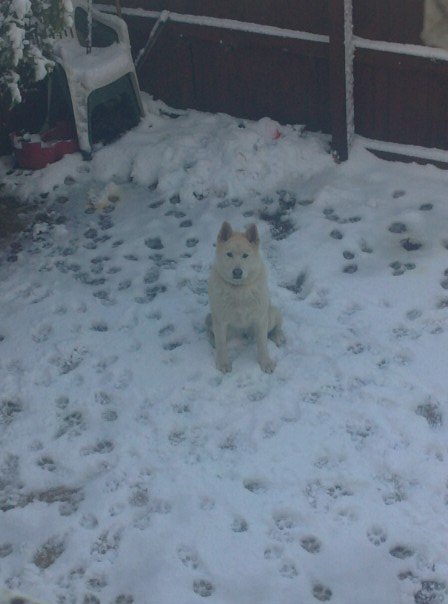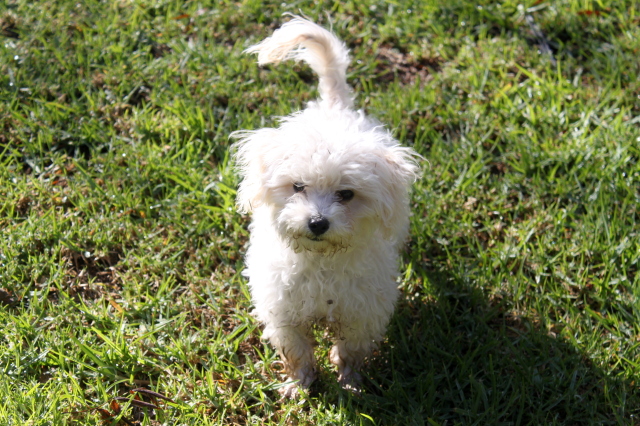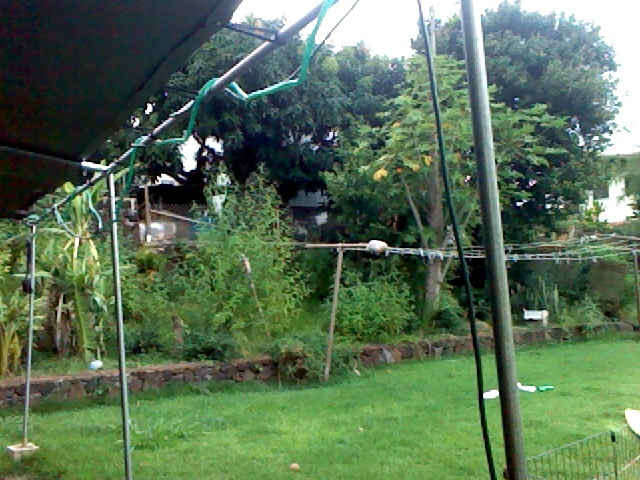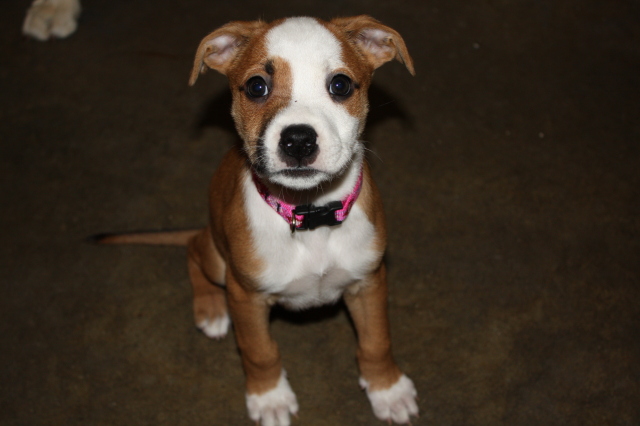QuestionI have a 4 year old Cavalier, we have had him since 8 wks old, (seen his mom and dad )We did the puppy training classes and took him to ADPT classes where he sat his bronze and silver classes and passed with flying colours. Over the last year we have noticed aggression in him towards other dogs, his tail shoots up and his bark is more like an ear piercing screech, this is getting worse on each walk he is trying to attack other dogs, it's pretty frightening to watch and hear this. ( he gets three walks a day, 1-2 hrs per walk a day) every day, we play games ensuring we exercise his mind as well as his body, he's a perfect weight, eats dry kibble. We don't have any other aggression at all. On his walk tonight he started up when a dog was coming towards us,I bent down to control him better as he was ready to attack the dog, he nipped me. This is a first! now we don't know what to do.
Any help would be grateful
regards
Elaine
AnswerHello Elaine:
Is he neutered, as an Adult Male he may be protecting his territory.
Most common reason for dog aggression is lack of socialization for the first 18 months of life with other dogs. I read you did classes, so am not sure of the time lines.
The most common method for improving dog related aggression is Counter Conditioning.
Counter conditioning and desensitization are the cornerstones to treatment of fears and anxieties. Yet the treatment of these conditions can be difficult. First, it is important to accurately identify the fearful or anxiety producing stimulus. Then, it is important to break the stimulus down into discrete units. Progress with treatment may be slow and animals may not generalize from the treatment sessions to real experiences. In order to be successful in modifying behaviour in dogs and cats a good understanding of learning, reinforcers and punishers is necessary.
What is learning? Learning is the relationship between behaviour and consequence, between making a response and the outcome of that behaviour. The results obtained affect later behaviours by either increasing or decreasing the likelihood of future similar responses. What is important is to realize that behaviour is something that occurs all the time. Therefore, when you remove a behaviour from an animal's repertoire, it will be replaced with something else. The goal of behaviour therapy is to structure that replacement behaviour in the correct way.
Since behaviour is the result of behaviour-consequence relationships understanding how they function is helpful. Generally speaking there are four types of behaviour-consequence relations. First, behaviour can result in positive consequences. This is positive reinforcement and will produce an increase in the behaviour that resulted in the positive event. Second, behaviour can result in negative consequences. This is punishment, and should result in a decrease in the behaviour that caused it. Third, the behaviour can result in the removal of something unpleasant. This is negative reinforcement or escape and will increase the likelihood that the preceding behaviour will occur again. Lastly, there are behaviours that result in the elimination of something pleasant, and this is called omission. 1 Learning occurs best when there is a clear relationship between the timing of the two events (behaviour and consequence) and the predictiveness of the consequences.
Learning principles and behaviour modification techniques
The previous discussion showed that behaviour is controlled by its consequences-either pleasant ones or unpleasant ones.
Reinforcement is a positive relationship between behaviour and outcome. The more you do, the more you get, and what you get is good. In other words, behaviour will be repeated. There can be positive reinforcement, often called a reward. Positive reinforcement and rewards are often used synonymously, but that is not always true. It is easy to see a food treat or a pat on the head as a reward for the dog. However, it is often more difficult to determine why some behaviours still exist because the reward is not clear. For example, what it the reward for a dog when it barks at the mailperson? The reinforcement comes from the mailperson leaving, and therefore the dog will continue to bark. The dog has erroneously assumed that the barking behaviour made the person leave, and therefore will engage in the behaviour again.
Negative reinforcement is the removal of something unpleasant that increases the likelihood that a behaviour will be repeated. In this situation there is a negative relationship between behaviour and outcome. One way to look at this relationship is to realize the more an animal engages in the behaviour, the less negative outcome is obtained. The easiest example of negative reinforcement to understand is escape behaviour. If an animal is anticipating an aversive outcome, perhaps a reprimand from the owner, if the animal can escape, or not be caught, then the aversive outcome will not occur.
Punishment is a situation where there is a positive relationship between behaviour and outcome, but the outcome is negative. In other words, the more of a behaviour an animal does, the more of a negative outcome is obtained. This is a situation that should make behaviour decrease. This is an extremely important component of punishment. When punishment is used to change behaviour, there should be a decrease in the target behaviour in very few applications of the aversive event. If not, then either the punishment is not being appropriately applied, or applied to the incorrect behaviour. Punishment also has the possibility of causing anxiety, fear and aggression and is not the recommended means of changing behaviour.
Schedule of reinforcement
The way the both reinforcement and punishment are used can greatly influence their effectiveness. This is often termed the "schedule of reinforcement". How behaviours are rewarded can be powerful determinants of future behaviour. Schedules of reinforcement can be based either on time (intervals) or amount of work, or number of responses (ratio). Schedules can be fixed, meaning that after so much time or a set number of responses reinforcement is given. Alternatively, behaviour can be reinforced on a variable schedule, meaning that a period of time or a number of responses must take place, but that period varies from reinforcer to reinforcer, with an average time or number of responses. Reinforcement given on a variable schedule results in strong acquisition of the response. This means that the rewards are given intermittently, and the animal is not exactly sure when the reinforcement or the punishment will occur. The outcome also must be closely associated in time with the behaviour for best results.
Extinction is a procedure used to end a behaviour. Extinction occurs when behaviour is no longer reinforced. When this occurs, eventually the behaviour will stop. However, it is very common, especially if the behaviour has been maintained on a variable ratio of reinforcement, for the behaviour to temporarily increase and this is called an extinction burst. When trying to get a behaviour to extinguish it is extremely important to identify ALL reinforcers and eliminate them.
Habituation is a process by which a stimulus no longer evokes a response. Usually this occurs with repeated presentation of a stimulus and the animal learning that it does not signal anything important.
Flooding is used to treat fears of harmless stimuli by forcing the animal to stay in the presence of the stimuli until the fear is extinguished.
Classical conditioning is the pairing of an unconditioned stimulus, with a neutral stimulus that results in a conditioned stimulus and a conditioned response. Classical conditioning can occur in both positive and negative ways. The timing of the presentation of the stimulus, the saliency of the stimulus and the predictability of the stimulus and the reinforcement influence the conditioning process.
Conditioned emotional response refers to establishing fears through a classical conditioning paradigm. This entails the association of a fear-producing stimulus with a previously neutral object. This type of learning can be very powerful and hard to extinguish.
Operant conditioning is learning how ones actions result in consequences; i.e. the individual causes the results. This is a stimulus-response/response-consequence relationship. In other words, what the animal does is critical to what happens next and those results dictate if the behaviour will occur again. Behaviour becomes more likely if it is reinforced, less likely if it is punished.
Counter conditioning is teaching a behaviour that is incompatible with the previous response. An example is to teach a dog to sit and stay instead of lunging. What is wanted is that the response be behaviourally and physiologically different from the previous response. Therefore, facial expressions, body postures, respiratory rate etc. are all-important components in the response. The goal is to change the association with the stimulus. Classical counter conditioning occurs when you pair a previous stimulus with some unconditioned response such as food.
Systematic Desensitization is gradually exposing an animal to stimuli at a low level so as not to evoke an undesirable response and conditioning relaxation responses instead. Paired with counter conditioning, this allows animals to learn to behaviour properly to stimuli that caused fear, aggression or other problem behaviours. The stimuli must be presented on a gradient from low to high without evoking the inappropriate or unwanted response. Therefore, the arrangement of the stimuli becomes very important.
Obstacles to treatment success in counter conditioning and desensitization (CCDS)
Generally there are five obstacles to treatment success. First is stimulus discrimination, the ability of the animal to distinguish the stimulus. In addition, the stimuli presented must be relevant and control the behaviour or the animal does not learn the appropriate response. Then the animal must learn what to do in the presence of the stimulus. Second, transfer of learning must take place for CCDS to work. The animal must learn to pay attention to the relevant stimulus and ignore irrelevant stimuli. Third, the animal must learn to generalize from the learning situation to the real world. This requires the behaviourist to know what stimuli are controlling the response. Fourth, inappropriate rewards may allow the animal to discriminate improperly and learn a different stimulus-response relationship than what was intended. Finally, the animal can be come more sensitive rather than less sensitive to the stimulus.
To overcome these obstacles, accurate history taking, good observational skills and appropriately set up treatment plans are important. The behaviourist and the owner must be willing to proceed slowly and set up the animal to succeed. Finally, the animal must be exposed to a variety of stimuli once the behaviour is learned.
Changing behaviour takes a good history, a realistic treatment plan and good supervision and cooperation between behaviourist and pet owner as well as a complete understanding of learning and behaviour modification techniques.

 Trying to housebreak pup & she stops going
Question
Rubie Rooh
Hello - I have a 4 month old
Trying to housebreak pup & she stops going
Question
Rubie Rooh
Hello - I have a 4 month old
 Dog Training And Punishment?
Question
Maya
hi there i have an akita X husky,
Dog Training And Punishment?
Question
Maya
hi there i have an akita X husky,
 Young Moodle Trouble
Question
Moodle, male, 10 - 11
I have a two question.
Young Moodle Trouble
Question
Moodle, male, 10 - 11
I have a two question.
 Designating bathroom area
Question
backyard
I have 2 medium mutts that are both b
Designating bathroom area
Question
backyard
I have 2 medium mutts that are both b
 agression
QuestionNew Pup
QUESTION: I am so totally at wit
agression
QuestionNew Pup
QUESTION: I am so totally at wit